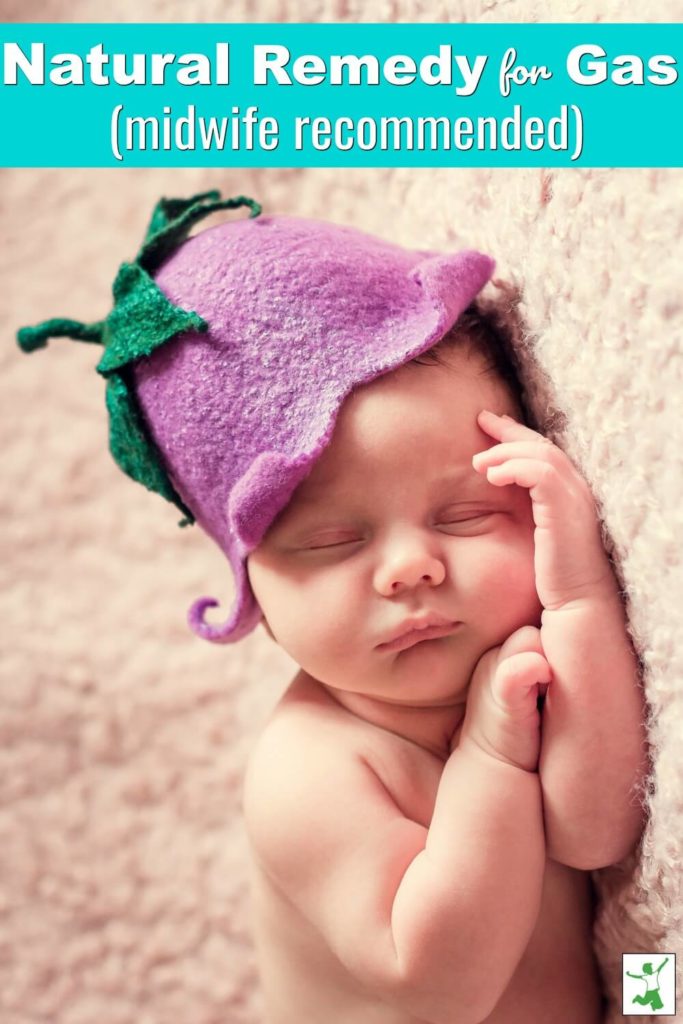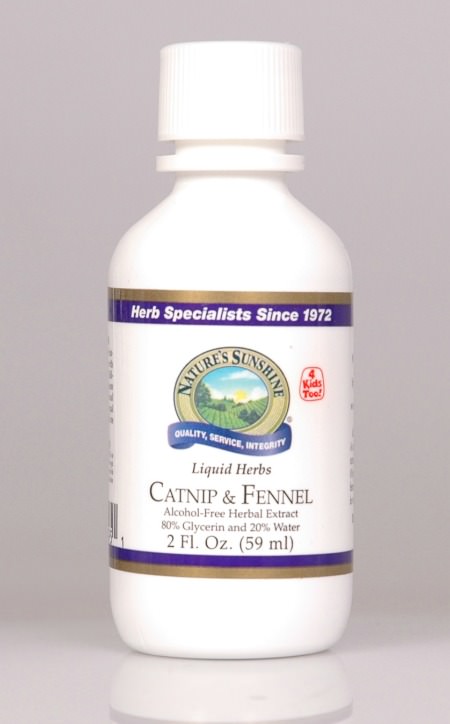Table of Contents[Hide][Show]

For those of you familiar with the various “nursing personalities”, my son was definitely the speed nurser (aka, “Barracuda”), latching on like a little vacuum and suckling with all his might for about 10 minutes on each side until there was nary a drop left.
Because he was such a hungry little fella and nursed so quickly, he suffered from a lot of gas issues due to swallowing quite a bit of air with each feeding.
Granted, some of his gas issues were due to my consumption of pasteurized organic dairy, but I didn’t know at the time that this was part of the problem.
Burping him properly after each feeding helped of course, but he still would get very gassy from time to time and he would cry from the discomfort in his little tummy.
Like any new mother, I wanted to give my baby relief as his cries, especially around sundown, were tough to handle on some days.
The first person I asked for help was my Pediatrician, who immediately recommended Mylicon infant gas drops, an over the counter gas remedy from the pharmacy.
I went to the local drugstore right away and picked up a bottle that had the words “safe for babies” emblazoned on the package. The words also proclaimed that the product was free of alcohol, saccharin or artificial flavors.
Sounded good.
When I got home, however, I started to read the fine print and was dismayed at what I discovered.
Dangers of Mylicon Drops
First of all, the active ingredient in this gas remedy was something I had never heard of before: Simethicone.
I then went from concerned to downright disturbed when I read the inactive ingredients:
Mylicon Drops ingredients: anhydrous citric acid (GMO), benzoic acid, flavors, glycerides (C14-18, mono- and di-), maltitol, methylcellulose, microcrystalline cellulose and carboxymethylcellulose sodium, polyoxyl 40 stearate, polysorbate 65, purified water, silica gel, sodium benzoate, sodium citrate, xanthan gum.
Citric acid almost certainly derived from genetically modified (GMO) corn?
Benzoic acid, a harmful preservative used in cosmetics?
Methylcellulose derived from pesticide residue laden wood pulp?
DNA damaging sodium benzoate linked to Parkinson’s disease, liver damage and hyperactivity in children?
Not in my child’s body, thank you very much!
 Gripe Water Full of Toxic Ingredients Too
Gripe Water Full of Toxic Ingredients Too
When I called the Pediatrician back with my concerns, the receptionist suggested Gripe Water as a safer gas remedy alternative. But examining the ingredients at the pharmacy for this supposedly safe herbal supplement wasn’t impressive either.
Gripe Water ingredients: purified water, sugar (GMO), glycerin (GMO), propylene glycol, sodium citrate, natural ginger flavor, citric acid, xanatham [sic] gum, disodium EDTA.
Sugar?
Citric acid known to likely contain MSG residues and most certainly derived from GMO corn?
Propylene glycol, aka “edible” antifreeze?
Disodium EDTA, a preservative that may cause allergic reactions, asthma attacks, skin rash, and possible kidney damage?
Unreal that this remedy could be considered in any way “natural” or herbally based!
At this point, I felt betrayed by my Pediatrician’s office which had recommended not one, but two gas remedies that were loaded with toxic ingredients. How in the world could putting such chemicals into my newborn’s body, possibly multiple times a day for weeks or months on end until he outgrew his gas issues NOT be harmful?
Natural Gas Remedy for Babies
I decided not to give my son either the Mylicon drops or the Gripe Water and promptly threw the bottle of Mylicon drops I had purchased in the trash.
Next, I picked up the phone and called my midwife for advice instead – something I should have done in the first place even though I was no longer under her care since baby was now several weeks old.
She advised that I buy a bottle of Nature’s Sunshine Catnip and Fennel extract and put a drop on my baby’s tongue after feedings to eliminate gas. Having been burned twice, I was careful to check the ingredients once again. I was relieved when I read the following:
Catnip and Fennel extract: Catnip leaves extract and fennel seed oil in a base of glycerin and water (sources).
At last, a safe gas remedy that had no ingredients that I felt uncomfortable putting in my baby’s body!
But, did it work?
Yes, it did! It worked extremely well in relieving gas and tummy discomfort in my newborn and it was safe to use with every single feeding.
As a bonus, my baby loved the taste too. I continued to use this gas remedy until he was well over a year old. Sometimes I would even use it if he wasn’t gassy as he enjoyed the taste so much and it soothed him a great deal before naps if he was feeling fussy.
This experience was one of my initial introductions to learning the critical importance of questioning what my Pediatrician said and examining for myself whether a medicine or procedure was truly “safe” for my child. Not only might a doctor’s advice be incorrect, but there is likely an equally effective remedy that is completely nontoxic that works just as well and you can feel good about using – if one is open to looking.
More Information
Are You a Tummy Bug Magnet? Fat Phobia May Be the Cause
Slippery Elm for Tummy Aches
Natural Reflux Remedy
Food Poisoning Remedies








My baby suffers from gas problem, I searched a lot on internet for information. But here I have got what I want. Thank you the healthy home economist. Right now I am giving ginger water to my baby to get relief from gas pain. Can you give more stuff on ginger also. I am very thankful to you. I got some information on gas relief with ginger but not sufficient.
When using the catnip and fennel, did you put it straight on your sons tongue from the bottle or did you mix it with water to dilute it some before giving it to him? Ordered some for my 7 week old son and not sure if I should be diluting it or not.
My baby will be 6 weeks friday would that be ok? Id ask her doctor but i dont think he would know about herbs… how old was yours when starting the drops?
Can the catnip and fennel be used for a 2 week old infant? You said your baby was already several weeks old when you used this product. My daughter is only 2 weeks old and has bad gas and discomfort.
Definitely check with your doctor first for a baby that young.
I have been at my wits end due to severe colic in my newborn who won’t sleep through the night and crying all over the time. After trying a bunch of remedies Babies magic tea finally did the work and settled his colic.
Hi! This is some great advice. We can all learn from your experience. My baby struggled with gas too. I tried an elimination diet and that helped somewhat. What I found to help the most was to carry my baby in a sling. The movement is very comforting and helps to release the trapped air. Here is an article I found that was quite helpful… breastfeeding-problems.com/baby-gas-pain.html
An informative tutorial for moms of gassy babies, however, I found a great relief from baby gas by using a natural and herbal tea “babies magic tea”.
I had to make several changes to comfort my colicky baby. I found out he was milk-intolerant and was also starting to break out of his swaddle. This all started to happen around 3 months of age. From white noise machines to the Zipadee-Zip (a swaddle transition sack) I found relief from his crying, lol.The Zipadee-Zip also added about 2 extra hours of sleep per night.
I too had to eliminate certain foods from my son’s diet. But I took several remedies such as using a sleeping baby sack called the Zipadee-Zip, white noise machines, essential oils, and simply just cuddling my son.
Glycerin is used to make soap and certain beauty products and in the form of nitroglycerin used to make dynamite. It can also be used to prevent hydraulic jacks from freezing. I don’t feel like that is any safer or more natural.
Water is also used in soap making and I hear terrorists drink lots of it…guess we should avoid that;)